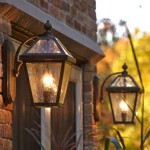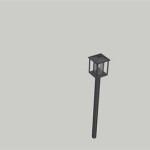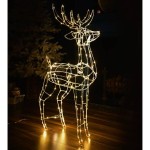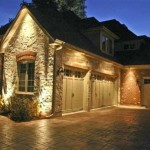String Lights Outdoor Installation: A Comprehensive Guide
Outdoor string lights offer a versatile and aesthetically pleasing way to illuminate patios, decks, gardens, and other outdoor spaces. Beyond their decorative appeal, they can enhance the ambiance of outdoor gatherings, extend the usability of outdoor areas after dark, and even provide a measure of security lighting. However, proper installation is crucial for safety, longevity, and achieving the desired visual effect. This article provides a comprehensive guide to installing string lights outdoors, covering planning, safety precautions, installation techniques, and maintenance considerations.
Planning the Installation
Before commencing any physical work, meticulous planning forms the bedrock of a successful outdoor string light installation. This phase involves assessing the space, determining the desired aesthetic, and carefully selecting the appropriate string lights and installation hardware.
The first consideration is the area to be illuminated. Take accurate measurements of the space to determine the required length of string lights. This includes not only the distance between hanging points but also any slack needed for draping or swags. Consider the desired density of the light; tighter spacing between bulbs will result in brighter, more consistent illumination, while wider spacing will create a more subtle, ambient effect. Sketching a diagram of the space and the intended layout can be extremely helpful during this planning stage.
The aesthetic goal is equally important. Do you envision a romantic, softly lit patio? Or a brightly illuminated area for outdoor dining? The desired ambiance will influence the choice of bulb type, color temperature, and hanging style. For a warm, inviting atmosphere, consider using incandescent or warm-toned LED bulbs. For a more modern or vibrant look, opt for cooler-toned LEDs. The hanging style can range from simple straight lines to elegant swags or creative patterns. Explore different styles online or in home décor magazines for inspiration.
Selecting the right string lights is paramount. Prioritize lights specifically designed for outdoor use, as these are typically weather-resistant and constructed with heavier-duty wiring. Look for string lights with a UL (Underwriters Laboratories) or ETL (Electrical Testing Laboratories) listing, which indicates that they have been tested and certified for safety. Consider the bulb type: incandescent bulbs offer a classic warm glow but consume more energy and have a shorter lifespan than LED bulbs. LED bulbs are more energy-efficient, longer-lasting, and available in a wide range of colors and styles. Ensure the string lights' voltage rating is compatible with the power source.
Finally, gather all necessary installation hardware. This may include hooks, eye bolts, zip ties, metal wire, turnbuckles, and extension cords. The type and quantity of hardware will depend on the chosen hanging method and the specific characteristics of the installation site. Choose materials that are weather-resistant and capable of supporting the weight of the string lights, especially if using heavier bulb styles.
Safety Precautions
Safety is non-negotiable when working with electricity outdoors. Before beginning the installation process, it is crucial to implement a series of safety precautions to prevent accidents and ensure personal well-being. Adhering to these guidelines will mitigate the risks associated with outdoor electrical work.
The first and foremost precaution is to disconnect the power source before handling any electrical wiring or fixtures. Locate the circuit breaker that controls the outdoor outlet you will be using and switch it to the "off" position. Verify that the power is indeed off by testing the outlet with a circuit tester. This will prevent accidental electric shock during the installation process.
When working at heights, use a sturdy ladder and ensure that it is placed on a level surface. Have another person spot you while working on the ladder to provide stability and assistance. Avoid overreaching or leaning excessively, as this can lead to falls. Wear appropriate footwear with good traction to prevent slipping.
Inspect the string lights and extension cords thoroughly for any signs of damage, such as frayed wires, cracked sockets, or water damage. Do not use damaged lights or cords, as these pose a significant electrical hazard. Do not attempt to repair damaged string lights or cords; instead, discard them and purchase replacements.
Avoid installing string lights near flammable materials, such as dry leaves, wooden fences, or awnings. The heat generated by the bulbs could potentially ignite these materials, leading to a fire. Maintain a safe distance between the string lights and any flammable objects.
If the installation involves working with metal materials, such as metal poles or fences, be extra cautious to avoid contact with power lines. Metal is a conductor of electricity, and contact with a live power line could be fatal. Maintain a safe distance from all power lines and consult with a qualified electrician if you are unsure about the proximity of power lines to your installation site.
During inclement weather, such as rain or thunderstorms, postpone the installation until the weather clears. Water is a conductor of electricity, and working with electrical equipment in wet conditions significantly increases the risk of electric shock.
Installation Techniques
Once the planning is complete and safety precautions are in place, the actual installation can commence. Several techniques can be used to hang outdoor string lights, depending on the available structures and the desired aesthetic.
One common method involves using existing structures, such as trees, fences, or the eaves of a house, as anchoring points. Attach hooks or eye bolts to these structures at the desired locations. Ensure that the hooks are securely fastened and capable of supporting the weight of the string lights. For trees, use tree-friendly straps to avoid damaging the bark. These straps distribute the weight evenly and prevent girdling of the tree.
If there are no suitable existing structures, install poles or posts specifically for hanging the string lights. Wooden posts can be sunk into the ground and secured with concrete. Metal poles can be attached to decks or patios using brackets. Ensure that the poles are tall enough to provide adequate clearance for the string lights and that they are spaced appropriately to achieve the desired span. Consider using treated lumber or rust-resistant metal for poles that will be exposed to the elements.
For long spans between anchoring points, use metal wire or cable to provide additional support. Attach the wire to the anchoring points and then suspend the string lights from the wire using zip ties or S-hooks. This will prevent the string lights from sagging excessively and ensure a more uniform appearance. Turnbuckles can be added to the wire to adjust the tension and prevent it from loosening over time.
When hanging the string lights, leave some slack to allow for expansion and contraction due to temperature changes. Avoid pulling the string lights too taut, as this can put stress on the wiring and shorten their lifespan. Create gentle curves or swags in the string lights for a more aesthetically pleasing look.
Secure the extension cord to a suitable outdoor outlet and ensure that the connection is protected from the elements. Use a weatherproof outlet cover to prevent water from entering the outlet and causing a short circuit. If necessary, use a surge protector to protect the string lights from power surges.
After the installation is complete, test the string lights to ensure that they are working properly. Check for any loose connections or damaged bulbs. If any problems are detected, disconnect the power source and troubleshoot the issue before proceeding.
Conceal the extension cord and any excess wiring as much as possible to create a cleaner, more professional look. Use cable ties or outdoor-rated tape to secure the wiring to existing structures. Bury the extension cord underground if possible, using appropriate burial-rated cable and conduit.
Consider using a timer or dimmer switch to control the string lights. A timer will allow you to automatically turn the lights on and off at preset times, while a dimmer switch will allow you to adjust the brightness of the lights to create different moods. Choose outdoor-rated timers and dimmer switches that are designed to withstand the elements.
Finally, periodically inspect the string lights and hardware for any signs of wear and tear. Replace any damaged bulbs or hardware promptly to maintain the safety and appearance of the installation. Clean the bulbs regularly to remove dirt and debris, which can reduce their brightness.

How To Hang Patio Lights

How To Hang String Lights Outdoors

28 Backyard Lighting Ideas How To Hang Outdoor String Lights

Make Your Outdoor Space More Inviting With String Lights The Seattle Times

How To Hang String Lights Outdoors

How To Hang Outdoor String Lights And Make Them Look Good Wirecutter

Outdoor String Light Ideas Oclights

How To Hang Outdoor String Lights The Ultimate Guide Jessica Welling Interiors

How To Hang Patio Lights

How To Hang String Lights 10 Diffe Ways Jessica Welling Interiors







